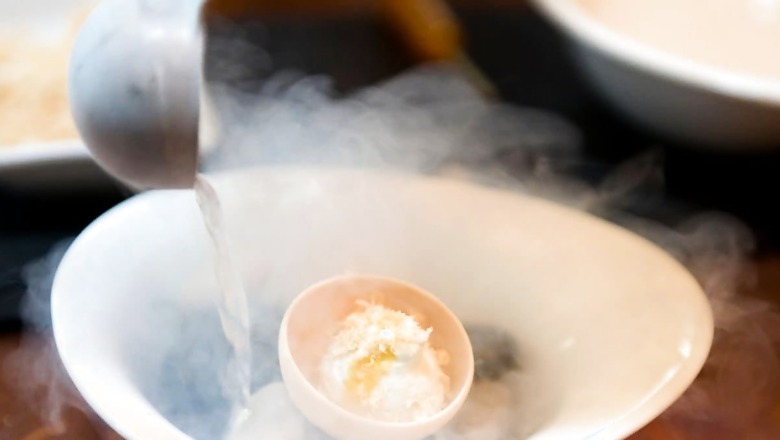
views
A 12-year-old girl was left with a “hole in her stomach” after she ate a paan infused with liquid nitrogen at a wedding reception in Bengaluru recently.
According to reports, she was hospitalised and diagnosed with a condition called perforation peritonitis – a hole in the stomach. The portion of the girl’s stomach with the hole, which was found to be 4×5 cm, had to be surgically removed via a sleeve gastrectomy, doctors said.
The child was in intensive care for two days, and was discharged from the hospital after six days. Medical experts said similar cases are being reported from different parts of India and there is a need for safety measures. They also pointed to the risks of using liquid nitrogen in an experimental manner in food.
In another recent incident, a video of a boy from Tamil Nadu went viral. In it, he is screaming in pain after eating a “smoking biscuit”. While the boy was hospitalised, the state government’s food safety department (FSD) ordered a ban on the use of liquid nitrogen in foods. It said smoking biscuits or liquid nitrogen-laced foods are “dangerous”.
The department also instructed the designated officers and food safety officers “to take enforcement action as per Food Safety and Standards Act 2006 against any Food Business Operator who is using liquid nitrogen for direct consumption along with food items like biscuit, ice creams, wafer biscuits, etc. The liquid nitrogen should be fully evaporated from the food or drinks before serving”.
There is, however, no such ban in Karnataka. A report published by The New Indian Express said a senior official from the state health department had claimed that it has asked the food safety officers to take action on such misuse if found, as per the Food Safety and Standards Act, 2006, but a detailed directive on the use of liquid nitrogen is yet to be issued.
Liquid nitrogen, if misused in foods or mishandled otherwise, can scorch organs or body parts it comes in contact with, making the burns appear like frostbites.
In 2017, too, a businessman from Gurugram had to get a part of his stomach removed after he drank a cocktail laced with liquid nitrogen. Minutes later, he was in excruciating pain and his stomach was swollen. His CT scan showed a hole that turned out to be about 10 cm in length in the lower part of the stomach.
“It (liquid nitrogen) can damage the lips, tongue, throat, lungs, and stomach. It may cause lesions or burn tissues. If it reaches the stomach, the organ could get perforated. In the lungs, it could produce CO2 (carbon dioxide) and the person could become unconscious. It could even prove fatal,” P Satheesh Kumar, designated officer of the FSD in Chennai, told The Hindu.
Another expert, Dr Pranav Honnavara Srinivasan – senior consultant of surgical gastroenterology at Bengaluru’s Sparsh Hospital – told The Indian Express: “Liquid nitrogen is employed in culinary settings primarily for its rapid freezing capabilities and dramatic visual effect. At -196 degrees Celsius, it instantly freezes food, creating a smooth texture especially beneficial in high-end desserts like ice cream. It also vapourises swiftly at room temperature, adding a visually appealing fog effect to dishes. However, the extreme cold can pose risks if residues remain in the food when consumed.”
WHAT IS LIQUID NITROGEN?
Liquid nitrogen was developed by a London-based company to improve the quality and shelf life of food. Since nitrogen’s volume expands around 700 times when it evaporates, it displaces the oxygen in the food pack, keeping it fresh.
The technique was used in packing coffee, potato chips, peanut and peanut butter, buttermilk, cheese and fried potatoes. These days, it is being used by restaurants and eateries to entice customers.
Liquid nitrogen in industries is made by distilling it from air, which comprises 21 percent oxygen and 78 percent nitrogen and a small percentage of other gases. Around 700 litres of air in the gaseous state condenses into just 1 litre of liquid air.
Explore in-depth coverage of Lok Sabha Election 2024 Schedule, Voter Turnout, Upcoming Phase And Much More At News18 Website




















Comments
0 comment